Frank
D. (Tony) Smith, Jr., Cartersville, GA USA, 9 November
2003 - Click Here for pdf
format.
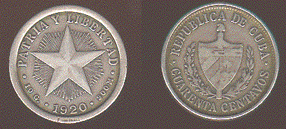
To form a string of binary 1s and 0s,
let 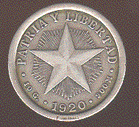 = 1 and
= 1 and 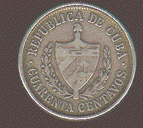 = 0.
= 0.
VoDou = IFA divination is based on 8 binary choices.
One way of divining is to cast a chain (Opele Chain) of 8
two-sided things, such as cowries or palm nuts. Here, I illustrate
with a chain of 8 coins:








There are
2 x 2 x 2 x 2 x 2 x 2 x 2 x 2
= 2^8 = 256 possible outcomes
There is only 1 outcome with no 1s ( all 0s):








There are 8 different outcomes with exactly one 1:

The 8 are, explicitly:
































































There are 28 different outcomes with exactly two 1s:


There are 56 different outcomes with exactly three 1s:



There are 70 different outcomes with exactly four 1s:




There are 56 different outcomes with exactly five 1s:





There are 28 different outcomes with exactly six 1s:






There are 8 different outcomes with exactly seven 1s:







There only one outcome with all eight 1s:








If we call the number of 1s in a given outcome the grade of that
outcome,
then we can organize the 2^8 = 256 outcomes by grade from 0 to
8:
1 + 8 + 28 + 56 + 70 + 56 + 28 + 8 + 1 = 256 = 2^8
The Opele Chain Casting method of divining
describes the graded structure of the 256 = 2^8 outcomes.
There is also an alternate method of VoDou and IFA
divination.
It is equivalent to dividing the 8-element Opele Chain








into two 4-element halves:








and then casting each 4-element half separately,
so that each outcome is a pair of 4 binary choices.
Since 4 binary choices have 2^4 = 16 possible outcomes,
a pair of 4 binary choices has 16 x 16 = 256 possible
outcomes,
which are the same 256 outcomes obtained by casting the whole
8-element Opele Chain.
Each of the 16 possible outcomes of 4 binary choiceds can be
represented by Tetragrams. Here is a traditional Yoruba sequence of
Tetragrams, with o representing the binary choice 0 and oo
representing the binary choice 1:
1 2 3 4
o oo oo o
o oo o oo
o oo o oo
o oo oo o
5 6 7 8
o oo o oo
o oo oo oo
oo o oo oo
oo o oo o
9 10 11 12
o oo oo oo
o o o oo
o o oo o
oo o oo oo
13 14 15 16
o o o oo
oo o oo o
o oo o oo
o o oo o
The 16 Tetragrams can also be arranged in a binary number
sequence
0 1 2 3 4 5 6 7
o o o o o o o o
o o o o oo oo oo oo
o o oo oo o o oo oo
o oo o oo o oo o oo
X
8 9 10 11 12 13 14 15
oo oo oo oo oo oo oo oo
o o o o oo oo oo oo
o o oo oo o o oo oo
o oo o oo o oo o oo
in which the first line of 8 Tetragrams (0-7) is the Mirror
Image of the second line (15-8) under a reflection through the
central point X that changes o to oo and oo to o.
The Tetragram method of divining describes the 256
= 16 x 16 outcomes in terms of 16 sets of 16 outcomes.
The 16 = 8 + 8 sets can be seen as two groups of 8
sets, with one group of 8 (call it <8) being a Mirror Image of the
other (call it 8>).
Therefore,
VoDou = AFA, through the Opele Chain Casting
and Tetragram methods of divining, give this structure to the
fundamental 256 outcomes:
1 +
8 +
28 + 56
+ 70 + 56 + 28 + 8 + 1 =
(<8
+
8>)
x 16
How can this structure be used to make a Physics
model?
In order to make a model of Fundamental Particle Physics, you must
describe the basic action by which
a Fundamental Particle moves
from an Origin point A in SpaceTime to a Destination point B in
SpaceTime.
--B
/ /|
/ / /
/ / /
|/ /
A--
As John Gribbin and Mary Gribbin say in their book Richard
Feynman, A Life In Science (Dutton, Penguin, 1997, at pages
85-87):
"... A line ...[from A to B]... represents the history of
a particle as it .... move[s] from A to B ... The insight
Feynman had, while lying in bed one night,unable to sleep, was
that
you had to consider every possible way in
which a particle could go from A to B -
every possible 'history'.
...[A Particle going]... from A to B is
conceived as ... a sum ... of ... all of the possible paths that
connect ... A to B ...
[Three of the possible paths are shown in the diagram
above] ... For each possible way that a particle can go from one
point to another in spacetime there is ...[an]...
amplitude ...[which]... has two parts,
which can be thought of in terms of little arrows. An arrow has a
certain length, and it points in a certain direction. ...".
As Richard Feynman says in his book QED: The Strange Theory of
Light and Matter (Princeton, 1988, at pages 82-83, 91, 129 ):
"... an event [such as going from A to B] can be
divided into alternative ways [paths] ...
each way [path] can be divided into
successive steps ... the arrows for each step can be "multiplied" by
successive shrinks and turns ...[ to get an arrow for each
alternative way ]...
the arrow[s] for each
[alternative] way can be "added" ... to obtain a final arrow,
whose square is the probability of an observed physical event
[such as going from A to B]...
...[another] basic action is:
[a particle] ...
emits or absorbs ...[another particle]...
the amplitude ... to emit or absorb a
...[particle]...[is]... just a number ...[that
describes the Strengths of Forces in Physics]...
... the amplitude for a real electron to emit or absorb a real
photon ... has been a mystery ever since it was discovered, and all
good theoretical physicists put this number up on their wall and
worry about it. ... It's one of the greatest damn
mysteries of physics ...
... There is no theory that adequately explains
... the observed masses of the particles ... We use the
numbers in all our theories, but we don't understand them - what they
are or where they come from. I believe that from a fundamental point
of view, this is a very interesting and serious
problem. ...".
The VoDou = IFA model of Fundamental Particle
Physics
solves the mystery of
the amplitudes for particles to emit or absorb other
particles, which give Force Strengths,
and also
solves the problem of Particle
Masses.
Since the answers to the mystery of Force Strengths and the
problem of Particle Masses are numbers, we must see how
the VoDou = IFA structures correspond to the
mathematical structures of Feynman's amplitude arrows.
What are the mathematical structures of Feynman's amplitude
arrows?
We need a SpaceTime so that Particles can move from point A
to point B. In the simplest Standard Model and Gravity,
large-scale SpaceTime is 4-dimensional.
We see that it might be useful to divide Particles into classes,
based on how they are affected by rotating them around in
SpaceTime:
The simplest type of Particle is just a point, with no
internal sense of direction in or connection to SpaceTime. It is
called a Scalar Particle, or spin-0 particle. Particle
physicists call it a Higgs Scalar. In the simplest Standard
Model, there is one Higgs scalar;
Another type of Particle has an internal sense of direction in
SpaceTime, so that if it is rotated one full turn of 360 degrees
about an internal axis, it is back to how it was oriented when it
started out. Since such Particles act like vectors in that a 360
degree rotation gets them back to where they started, they are
called Vector Particles, or spin-1 particles. Particle
physicists call them Gauge Bosons. In the simplest Standard
Model of the electromagnetic, weak, and color forces, there are 12
Gauge Bosons. In the Conformal Group that produces Gravity by a
generalized MacDowell-Mansouri mechanism, there are 16 Gauge
Bosons. Therefore, for the simplest Standard Model plus
Gravity, there are 12+16 = 28 Gauge Bosons;
A third type of Particle not only has an internal sense of
direction, but also has a sense of how it is connected to the
SpaceTime in which it lives. Louis H. Kauffman, in his book Knots
and Physics (World Scientific Publishing Co. 1991), says that such
a particle is like a ball attached to its surroundings by string,
as in this picture from Gravitation, by Misner, Thorne, and
Wheeler (Freeman 1972):
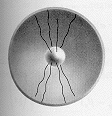
The orientation of the ball is related to the surrounding
sphere by the tangle of the strings connecting them. If you rotate
the ball 360 degrees, the strings are tangled, but if you go to
720 degrees, the strings get untangled. Here is a demonstration of
how the 720 degree rotation works:
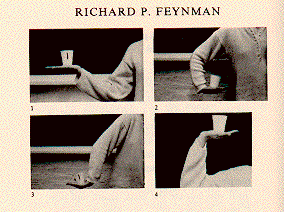
It is from Feynman's 1986 Dirac Memorial Lecture (Elementary
Particles and the Laws of Physics, Cambridge Press 1987), and it
shows a cup held by a dancer in one hand. Rotating the cup by 360
degrees gets the arm (which is connected to the shoulder of the
dancer) twisted, but turning the cup another 360 degrees gets the
arm back straight. In it, picture 1 is the start, picture 2 is 180
degrees, picture 3 is 360 degrees (note how the arm is twisted),
picture 4 is 540 degrees, and picture 1 again is 720 degrees. -
Such particles that have to be rotated twice to get back to where
they started are called Spinor Particles, or spin-1/2
particles.
As Richard Feynman says in his article The Reason for
AntiParticles (in the book Elementary Particles and the Laws of
Physics, the 1986 Dirac Memorial Lectures, Cambridge, 1987,
page10): for Spinor Particles "... there must be antiparticles
...[which look like]... particle[s] moving
backwards in time ...". In other words, for each Spinor
Particle there must exist a Mirror Image Spinor AntiParticle
that looks like the original one moving backward in time. Particle
physicists call them Fermion Particles and Fermion
AntiParticles. In the simplest Standard Model, there are 3
sets of 8 Fermion Particles and 8 Fermion AntiParticles. Each of
the 3 sets is called a generation, so that there are 8
first-generation Fermion Particles and 8 first-generation Fermion
AntiParticles.
In the VoDou = IFA structure of the fundamental 256 outcomes:
1 +
8 +
28 + 56
+ 70 + 56 + 28 + 8 + 1 =
(<8
+
8>)
x 16
8
corresponds to a 4+4 = 8-dimensional SpaceTime
1
corresponds to one Higgs Scalar
28
corresponds to 12+16 = 28 Gauge Bosons
<8
corresponds to 8 first-generation Fermion Particles
8>
corresponds to 8 first-generation Fermion
AntiParticles
At first glance, it looks like the VoDou = IFA structure matches
the structure of particle physics, with two exceptions:
- a 4+4 = 8-dimensional SpaceTime and
- only the first generation of Fermion Particles and
AntiParticles.
However, if the 8 SpaceTime dimensions are broken down into
- 4 dimensions that we see as the large-scale Physical SpaceTime
of particle physics, plus
- a small 4-dimensional ball (called a CP2 space, or Internal
Symmetry Space) at each point of the large-scale 4-dimensional
spacetime
we can also see where the second and third generations of Fermion
Particles and AntiParticles come from:
If you reduce the original 8-dimensional spacetime
into 4-dimensional physical spacetime
and 4-dimensional Internal Symmetry Space
then
if you look in the original 8-dimensional spacetime
at a fermion (First-generation represented by a single octonion)
propagating from one vertex to another
there are only 4 possibilities for the same propagation
after dimensional reduction:
1
The origin o and target x vertices are both
in the 4-dimensional large-scale physical spacetime
4-dim Internal Symmetry Space --------------
4-dim Physical SpaceTime ---o------x---
in which case the propagation is unchanged, and the
fermion remains a FIRST generation fermion.
2
The origin vertex o is in the large-scale physical spacetime
and the target vertex * in in the Internal Symmetry Space
4-dim Internal Symmetry Space ----------*---
4-dim Physical SpaceTime ---o----------
in which case there must be a new link from
the original target vertex * in the Internal Symmetry Space
to a new target vertex x in the large-scale physical spacetime
4-dim Internal Symmetry Space ----------*---
4-dim Physical SpaceTime ---o------x---
and a new vertex can be introduced at the original
target vertex in connection with the new link
so that the fermion can be regarded as a SECOND generation fermion.
3
The target vertex x is in the large-scale physical spacetime
and the origin vertex o in in the Internal Symmetry Space
4-dim Internal Symmetry Space ---o----------
4-dim Physical SpaceTime ----------x---
in which case there must be a new link to
the original origin vertex o in the Internal Symmetry Space
from a new origin vertex * in the large-scale physical spacetime
4-dim Internal Symmetry Space ---o----------
4-dim Physical SpaceTime ---O------x---
so that a new vertex can be introduced at the new
origin vertex O in connection with the new link
so that the fermion can, as in case 2, be regarded as a SECOND generation fermion.
4
Both the origin vertex o and the target vertex *
are in the Internal Symmetry Space,
4-dim Internal Symmetry Space ---o------*---
4-dim Physical SpaceTime --------------
in which case there must be a new link to
the original origin vertex o in the Internal Symmetry Space
from a new origin vertex O in the large-scale physical spacetime,
and a second new link from the original target vertex *
in the Internal Symmetry Space to a new target vertex x
in the associative spacetime
4-dim Internal Symmetry Space ---o------*---
4-dim Physical SpaceTime ---O------x---
so that a new vertex can be introduced at the new
origin vertex O in connection with the first new link,
and another new verterx can be introduced at the original
target vertex * in connection with the second new link,
so that the fermion can be regarded as a THIRD generation fermion.
As there are no more possibilities, there are no more generations.
Therefore the VoDou = IFA Structure of the
fundamental 256 outcomes
1 +
8 +
28 + 56
+ 70 + 56 + 28 + 8 + 1 =
(<8
+
8>)
x 16
8
corresponds to a 4+4 = 8-dimensional SpaceTime
1
corresponds to one Higgs Scalar
28
corresponds to 1+3+8 + 16 = 28 Gauge Bosons
<8
corresponds to 8 first-generation Fermion Particles
8>
corresponds to 8 first-generation Fermion AntiParticles
after breaking the 8-dimensional SpaceTime into 4 Large-Scale
Physical SpaceTime dimensions plus 4 Internal Symmetry Space
dimensions, with the consequent production of second and third
generation Fermion Particles and AntiParticles,
contains a representation of the simplest Standard
Model plus Gravity.
So, given the correspondence between VoDou = IFA Structure and the
Physics Structures of the simplest Standard Model plus Gravity,
how do we set up to calculate the numbers for
the Amplitudes for Emission and Absorption of Particles (which
are equivalent to Force Strengths and Charges) and
the Masses of Particles ?
The mathematical structure used in such a calculation is called a
Lagrangian, and it is of the form
INT (
1 +
28 +
<8,8>
)
8
- the 1 is a term involving the
Higgs Scalar;
- the 28 is a term involving the
Gauge Bosons;
- the
<8,8>
is a term involving the Fermion Particles and AntiParticles;
and
- the INT over 8 means to sum (or
integrate) the Higgs Scalar, Gauge Boson, and Fermion terms over
the relevant region of SpaceTime.
The numerical structure form of the VoDou = IFA Structure comes
from the correpondence of the fundamental 256 outcomes
1 +
8 +
28 + 56
+ 70 + 56 + 28 + 8 + 1 =
(<8
+
8>)
x 16
with the Graded Structure and Spinor Structures of the
256-dimensional Cl(8) Clifford Algebra of 16x16 real matrices
M(16,R):
x x x x x x x x x x x x x x x x
x x x x x x x x x x x x x x x x
x x x x x x x x x x x x x x x x
x x x x x x x x x x x x x x x x
x x x x x x x x x x x x x x x x
x x x x x x x x x x x x x x x x
x x x x x x x x x x x x x x x x
x x x x x x x x x x x x x x x x
x x x x x x x x x x x x x x x x
x x x x x x x x x x x x x x x x
x x x x x x x x x x x x x x x x
x x x x x x x x x x x x x x x x
x x x x x x x x x x x x x x x x
x x x x x x x x x x x x x x x x
x x x x x x x x x x x x x x x x
x x x x x x x x x x x x x x x x
The black-colored 56 + 70 + 56 + 28 + 8 + 1 and 16 also have
physical interpretations, some of which are related to the
duality between position and momentum that is related to the
Heisenberg Uncertainty Principle of Quantum Theory. Those
interpretations are:
- The 16, which breaks down
into 8 + 8, correspond to
- a set of 8 matrices (called Dirac gamma matrices) that
describe how Spinor Particles move in SpaceTime from the point
of view of position in SpaceTime, and
- another set of 8 matrices (also called Dirac gamma
matrices) that describe how Spinor Particles move in SpaceTime
from the point of view of momentum in SpaceTime.
- The 56 (corresponding to
outcomes with three 1s) is fixed and not dynamically active
after 8-dimensional SpaceTime is broken into 4-dimensional
Physical Spacetime and 4-dimensional Internal Symmetry Space.
At very high energies where the 8-dimensional
SpaceTime is not broken, there may be some phenomena related
to the 56, but such high energies (possibly Planck-level) are
currently beyond the reach of human experiments and observations,
such as some subtle phenomena related to Interactions
among the World-Lines of Possible Histories in the Quantum
Many-Worlds. Such Interactions can be described in terms of
an M-theory with global
symmetry of the exceptional Lie algebra E7, whose
56-dimensional representation corresponds to the 56.
- The 70 (corresponding to outcomes with four 1s) breaks down
into 35 + 35. One 35 is
fixed and not dynamically active after 8-dimensional SpaceTime
is broken into 4-dimensional Physical Spacetime and 4-dimensional
Internal Symmetry Space. At very high
energies where the 8-dimensional SpaceTime is not broken,
there may be some phenomena related to that 35, but such high
energies (possibly Planck-level) are currently beyond the reach of
human experiments and observations, such
as some subtle phenomena related to the Higgs Scalar.
- The other 35 and the 56 + 28 + 8 + 1 are dual
to the 1 +
8 + 28 +
56 and the first 35, and describe
in terms of momentum the same physical phenomena that the
1 + 8 +
28 + 56 and the first 35 describe
in terms of position.
Taken together, the 56 and 70 correspond to the
126 root vectors of the exceptional Lie algebra E7 that is the
global symmetry group of an
M-theory describing Interactions among the World-Lines of Possible
Histories in the Quantum Many-Worlds.
All 256 VoDou = IFA outcomes are
closely related to the 240 root
vectors of the exceptional Lie algebra E8 that is the global
symmetry group of an
F-theory describing Interactions among the World-Lines of Possible
Histories in the Quantum Many-Worlds.
Of course, our Universe
and its Quantum
Many-Worlds is very big and one set of 256 VoDou = IFA
outcomes, that is, one copy of the 256-dimensional Cl(8) Clifford
algebra, describes only one small part, or one Event.
To describe such very big things, you need a very big Clifford
algebra, say Cl(8N) where N can be as large a number as you want.
What makes VoDou = IFA effective for such very big things is the fact
that any very big Clifford algebra Cl(8N)
can be factored into N copies of the basic 256-element VoDou = IFA
Cl(8) Clifford algebra:
Cl(8N) = Cl(8) x ...(N times tensor product)... x
Cl(8)
Therefore,
our entire
Universe and its Quantum Many-Worlds can be described completely in
terms of the 256 VoDou = IFA outcomes.
Further,
the VoDou = IFA model can be used to describe
Quantum
Consciousness, not only on the level of Human
Consciousness, but also of
our entire Universe, and to give us
a framework within which to consider our Future
History and our possible Fates.
Details of calculations of Force Strengths and
Particle Masses, including comparison with experimental
results and further related math and physics structures, are
contained in a paper that can be found at these links:
It is clear that the VoDou Physics Model
meets Einstein's
Criterion for a good fundamental physics model, as it is a
structure which is based only upon
"... a faith in the simplicity, i.e.,
intelligibility, of nature: there are no arbitrary constants ... that
is to say, nature is so constituted that it is possible logically to
lay down such strongly determined laws that within these laws only
rationally completely determined constants occur (not constants,
therefore, whose numerical value could be changed without destroying
the theory). ...".
Tony Smith's Home Page
......

 = 1 and
= 1 and  = 0.
= 0.![]()
![]()
![]()
![]()
![]()
![]()
![]()
![]()



